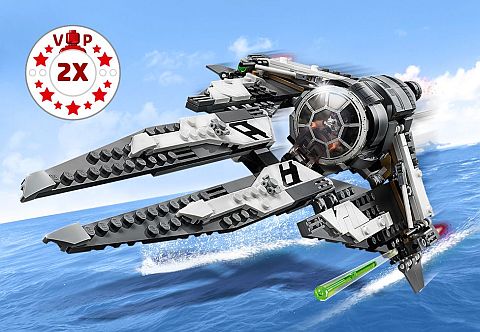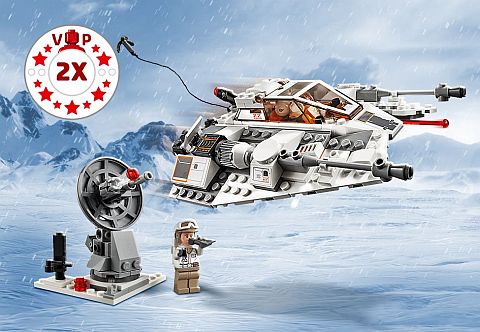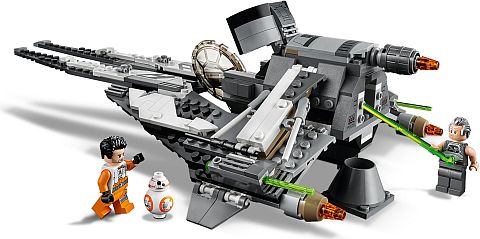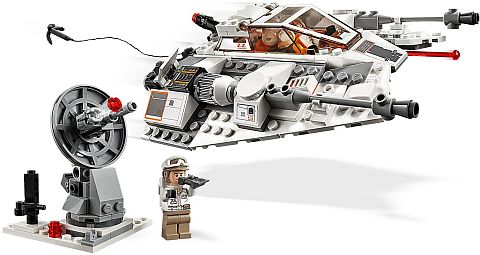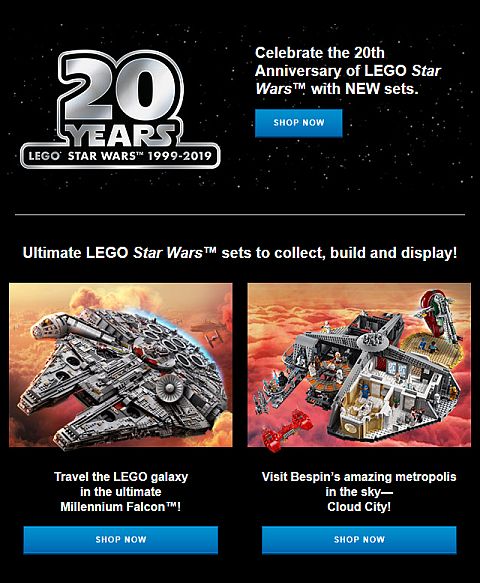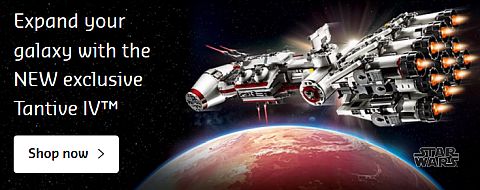(Written by William)
In my most recent reviews (see links at the end of this post), I talked about sets that are high profile from popular themes but with some controversial aspects. I wanted to form my own opinion on them, and share my thoughts and findings with our readers. When it comes to the #10265 LEGO Creator Ford Mustang, however, the set was pretty much universally well received, and I knew I was going to love it as well. Early copies of the set does have some problems with the white stripes not aligning properly, but from what I hear, LEGO has been good at correcting this in later copies, and also sending replacements to those who encountered the issue.
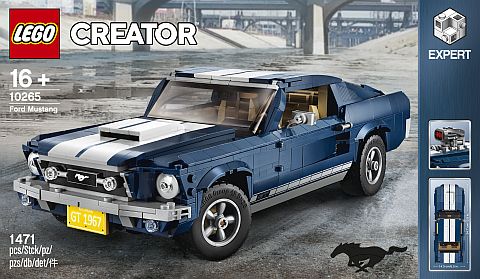
Unlike in some of the previous LEGO Creator Expert Builder vehicles, with the #10265 LEGO Creator Ford Mustang LEGO designers didn’t limit the customization options to just swapping out license plates. They knew that the real version of this car has been modified in so many ways that they had to acknowledge at least a few of them. In fact, the instruction manual lists all the modifications you can do: adjustable rear suspension, shorty exhaust headers, supercharger with scoop intake, front splitter, rear spoiler, and nitrous oxide tank in the trunk. Plus, you get your choice of front and back license plates (there are five sets of these, so you are quite flush with options – please note that the license plates are stickered tiles).
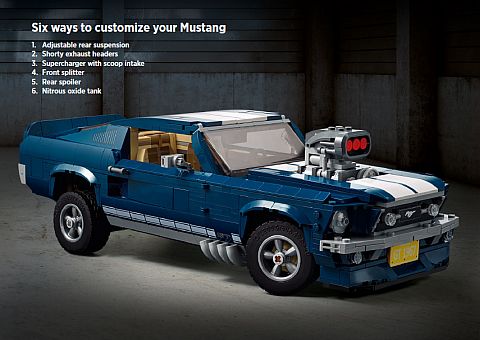
And if all that wasn’t enough, LEGO designers redesigned the wheel rings so that they could include functional steering (a first amongst the LEGO Ideas Creator Expert vehicles). Between this and the adjustable rear suspension, the Mustang really feels like an excellent successor to the feature-heavy #10262 LEGO Creator James Bond Aston Martin DB5. In addition, we also get all the standard car features like opening door, opening hood and trunk, removable roof, tilting seats, etc.
In the video above, I mention some of my additional thoughts on the #10265 LEGO Creator Ford Mustang, and below, I will discuss some of the unique building techniques that can be found in this set.
LEGO WORM GEAR FOR FIXED POSITIONING
Worm gears are essentially a hollow cylinder with a spiral shape on the outside. When the cylinder is rotated, the spiral acts like a gear and can move the teeth of a gear along its length. I have played around with warm gears before, and up until building this set, I mostly considered them an easy way to create propulsion. Worm gears are rather compact parts that can drive a regular gear forward. But there are other ways to use warm gears as well, as demonstrated in the #10265 LEGO Creator Ford Mustang set.
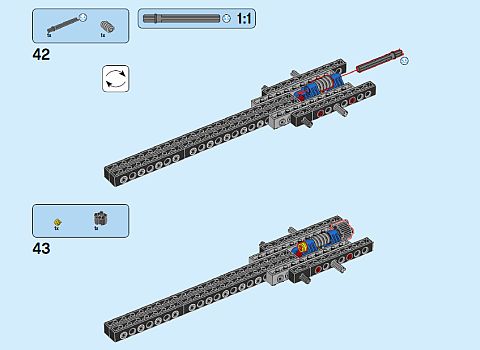
The technique involves creating an adjustable control that can set a fixed position. The key is that the worm gear can easily interact with a normal round tooth gear, but the reverse is not true; a normal gear that tries to move a worm gear will just get locked in place. As an added bonus, the normal gear often acts like a tension element for the worm gear. This means you can pretty much mount it in place and not worry about it turning on its own. The end result is a very precise way to fix the position of geared elements.
VEHICLE STEERING WITH LEGO
To make steering large LEGO Creator vehicles possible in the #10265 LEGO Creator Ford Mustang, LEGO created a new element. It’s interesting to note that even much older LEGO Technic sets accomplished steering without the need of this new part. My guess is that the new element was made to keep the scale of the LEGO Creator Expert Builder vehicles more or less the same. But whatever was the reason, I’m happy with this new part.
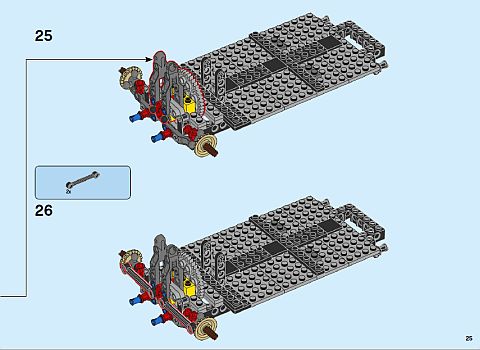
To build the steering system, the first thing needed is a swivel point. The #10265 LEGO Creator Ford Mustang uses a part with three ball-joints. Ideally, what you are looking for is something that turns in place, can accommodate a wheel, and has a connection point so that you can control it. In this case, two of the ball-joints are what controls the motion, and the third joint controls the whole contraption. Next, the two swivel points need to be connected together in some way. Here, LEGO designers used links to connect each swivel point to a central hub. Finally, the connecting bridge needs to be moved in some way. In this set, a small lift-arm is attached to a big gear. Everything else is there just to control that gear.
To summarize, the crucial elements are the swivel points, the connecting bridge, and how to move that bridge. If you get all these in place, then the hard work is over. This will synchronize the wheels while at the same time not creating a lot of excess movement (like if they were just attached to the same axle and the axle could move). This method of steering does not give up stability, which is what can cause catastrophic failure in poorly planned vehicles.
USING LEGO STUD ROTATION AS A HINGE
If you watch the designer-video for the #10265 LEGO Creator Ford Mustang (see links at the end of this post), the designers mention working on a new hinge design. It’s not a new piece or even a new method in how the piece can connect. Rather, it is in the doors of the model, and the lower two hinge-plates working together. One of the hinge-plates handles the opening of the door. The more internal hinge-plate then acts as a limiter for the door’s movement. It accomplishes this by making two distinct movements. The first is its normal hinging action, the second is that it swivels on a single stud.
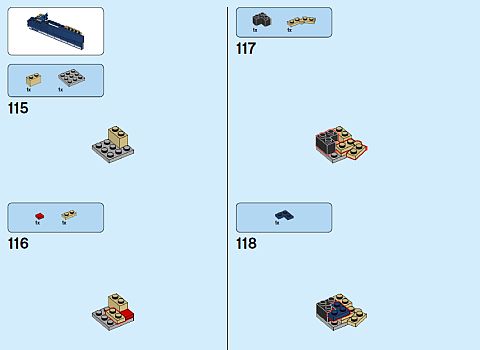
For this to work properly there needed to be clearance for the hinge-plate in every direction around the stud so that the plate doesn’t run into anything. Most LEGO fans are no stranger to tilting a plate on a stud, but we weren’t sure if using it as a moving joint would be considered a bona fide and safe building technique that doesn’t stress the parts. Well, given that the technique is included in this set, and LEGO’s vigorous quality control procedures to test building techniques, it looks like we can use it safely. Just make sure to lock the stud in place before you go crazy with the motions.
APPLYING WHAT YOU LEARN
The #10265 LEGO Creator Ford Mustang is full of very practical techniques that are easy to use, but a bit novel in their implementation. For anyone making a joint that needs to hold some serious weight, you might just want to throw in a worm gear to see if it can handle the job. As for steering, just like any advanced effect you are trying to create, start by identifying the key elements in the system. As I pointed out in steering section, you’ll want to build swivel points, connect them together, and then figure out how to move the connector piece. By breaking down a more complex design into much smaller obstacles, it can be a lot easier to solve. And who doesn’t like another way to use a basic stud? As using studs for rotation is a LEGO-tested feature, we can use it with confidence knowing that the involved parts won’t break. So, twist the night away in this sleek muscle car.

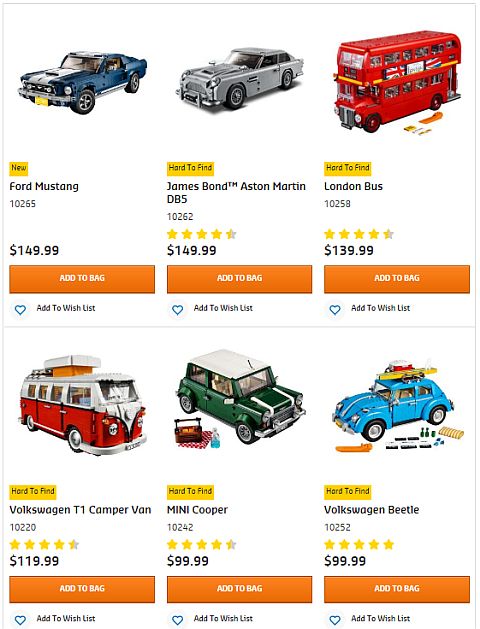
What do you think? How do you like the #10265 LEGO Creator Ford Mustang? Do you have it already? Have you built it? And what do you think of the techniques mentioned here? Are there any other interesting building techniques that you found in the set? Feel free to share and discuss in the comment section below!
And you might also like to check out the following related posts:


